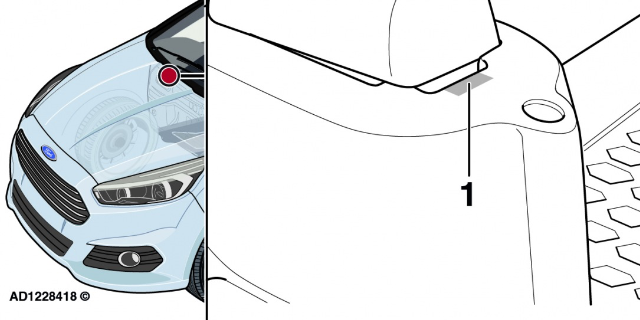Why is a heat pump air conditioner better than a traditional compressor?
The previously dominant compressor-based cooling system found its opponent in heat pump solutions. Since its drive consumes useful power, the heating and cooling of electric vehicles has a significant impact on the vehicle’s range, since energy must be taken directly from the battery for heating. However, this is not immediately felt by the driver – in a vehicle equipped with an internal combustion engine, the reduction in performance can be felt as soon as the compressor is switched on. In the case of ICE vehicles, the system is also characterized by heating with waste heat.
Creation of the demand
As electric vehicles gradually gained ground, it became more and more necessary to integrate a system that uses more energy than the compressor solution, and at the same time, it was also desirable that the car should not be operated mechanically.
These two features were not particularly problematic for the internal combustion versions, since many other auxiliary devices are also mechanically driven, and the system can also use the above-mentioned heat resulting from various losses for heating.
In terms of their structure, electric vehicles differ from their previously mentioned counterparts in very important points from the point of view of the topic.
The efficiency of the drive chain is much higher, so the waste heat is orders of magnitude less. What is much more important than this is that the energy density of batteries is still far behind gasoline and diesel, so much so that the better efficiency does not make up for it. As a result, each additional consumer in the drive has a significant impact on the car’s range.
The resistance heating element
One of the simplest structures used for heating electric cars is the resistance-based heating element, which is still found in many vehicles today as a secondary heating system – we will soon cover the reason for this.
It does not require a mechanical drive, it can operate reliably with few parts, but its efficiency is not outstanding, and it can only be used in the heating direction, so it is not enough for air conditioning on its own. However, its raison d’être for BEV-type cars is unquestionable, since in sufficiently cold weather the waste heat is not enough to heat the cabin at all due to the too good efficiency.

(stock photo – pixabay.com)
Operation of the heat pump
Due to the above, it became necessary to have an air conditioning system that works in both directions, and its energy consumption is considerably more efficient.
You might think that the heating or cooling of a passenger space, which is extremely modest compared to a residential building, can be maintained with a negligible energy demand, but this is only partially true. The insulation of automobiles is much weaker, and the amount of air flowing out is also greater per unit time, so when planning the system, a significantly larger air volume than what can fit in the cabin at the same time must be taken into account.
The aforementioned efficiency is measured by the COP value for such systems. It is nothing but the ratio of heat output to input power. This ratio is always 1 for a resistor, since it cannot give off more heat than it has access to energy.
This is where the heat pump rises above the rest.
The almost 200-year-old invention can even have a COP value greater than 1 by using waste heat, making it more efficient than any other cooling/heating system.
The principle of operation of a heat pump system is similar to that of air conditioning units: the refrigerant is compressed and condensed to raise its temperature, or undergoes expansion and evaporation to lower its temperature.
The A/C uses the low-temperature refrigerant to generate cool air flow, and the heat produced by the condensers is released through the outdoor unit. This well-known concept also exists in the heat pump system, with the difference that the heat is used to heat the cabin instead of being sent outside. In summary, the heat pump subjects the refrigerant through a repeated cycle of compression, condensation, expansion and evaporation, and uses the resulting high and low temperatures for both heating and cooling purposes.
The problem
No matter how ideal the heat pump seems, there are disadvantages to the system. Most versions (especially those that use compressible refrigerant, which is most of them) can only operate in a fairly limited temperature range – if it gets too cold outside, they simply can’t find any heat to pump into the cabin with the pump.
This is where the resistance heating element comes into play again: this is the reason why a backup heat source is needed when using a heat pump.
Also, COP decreases as the temperature difference between the hot and cold sides increases – in other words, a heat pump trying to heat the interior of a car (or a house) is only effective as long as the ambient temperature is not in the very low range.

(stock photo – pixabay.com)
The other factor is that the heat pump uses a compressible refrigerant pumps are always more complicated than a simple resistive or even fuel-burning heater, which usually means they are less reliable, and the said refrigerant is either flammable (eg cyclopentane), powerful. greenhouse gas (e.g. CFCs or chlorofluorocarbons) or toxic (e.g. ammonia).
Gradual expansion
The biggest concern of consumers of electric vehicles has always been the relatively short range. This means so much pressure to this day that, despite all its disadvantages, the heat pump system has become almost the sole ruler of the market.
Especially since these concerns only intensify in the winter months, when turning on the heating can reduce the range by 30-40%. This is a huge difference – heating devices use this much energy. According to a 2014 survey, many electric car users drove without heating in cold weather, fearing that the heating could drain the battery.
This survey was carried out by KIA, and later that year they came up with the heat pump Soul EV. We don’t have representative data on the changes, but the fact is that the Ionic Electric showed a 19% improvement in winter range reduction after being fitted with a heat pump.
The first application took place exactly ten years ago, in 2012, when Nissan came up with a heat pump version of the Leaf. In the following decade, almost all manufacturers adopted the solution without exception.









